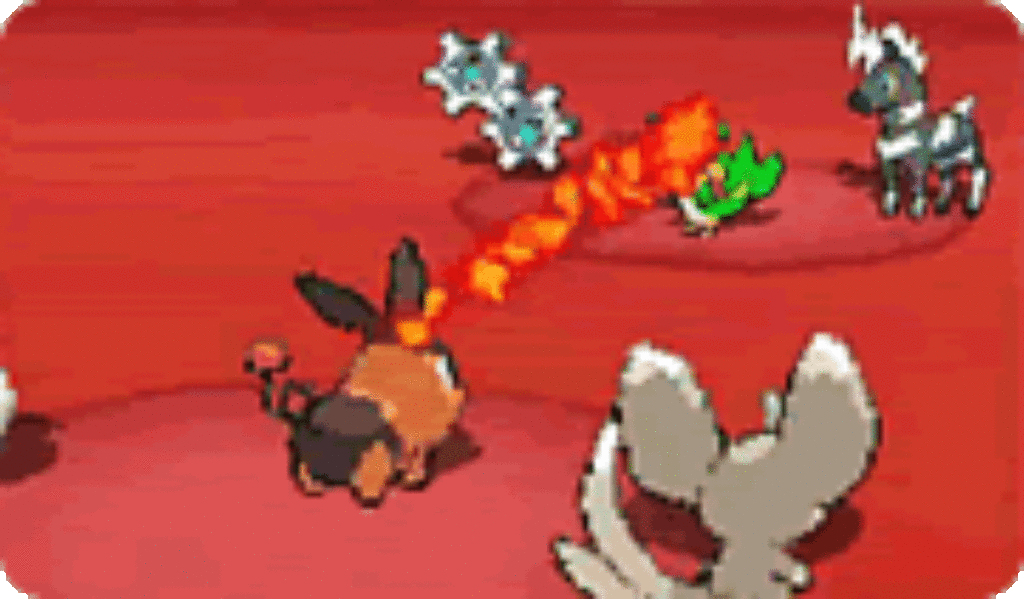
Those who have tried catching and battling the cute Pokémon “monsters” at some point in the last 13 years probably have a good idea of what to expect from the franchise’s latest round of Nintendo DS handheld video games. Those who ignored Pokémon as a passing fad back in the late ’90s, however, may now be wondering if their kids should be hunting and growing these little anime critters. Because this franchise has turned into an empire, and it’s still going strong with a reported 1 million copies of the new games sold in their first 24 hours of release.
The whole Pokémon phenomena start in Japan back in 1996 under the name Pocket Monsters (Poketto Monsuta). The idea was said to have been born from creator Satoshi Tajiri’s love for insect collecting as a boy. He created a fantasy video game world full of cartoonish creatures (instead of crickets and beetles) just waiting for players to collect them, then train them to compete against other trainers’ charges.
That formula and basic fantasy world storyline stayed pretty much intact when it was exported to the U.S. in 1998. And it hasn’t really changed since. The big difference over here was that the name was shortened from Pocket Monsters to Pokémon. And as quick as you could say “Pikachu!” the franchise expanded into comic books, trading cards, toys, novels, Saturday morning cartoons and even movies. But in spite of all that merchandizing, video games still rule the Poké ball-tossing roost. In fact, the dozens of games released over the years have sold more than 200 million copies worldwide, making this one of the top-selling game series of all time.
Gotta Catch ‘Em All
Pokémon White Version and Pokémon Black Version are the newest releases. And they’re pretty much the same game with the small exception of a few different creatures to collect and one different world area to explore. Why would the gamemakers do that, you ask? Well, so fans can buy different versions of the game and trade some of the 156 brand-new Pokémon back and forth, of course! (We’ll talk more about that in a moment.)
The game plops you down in the never before visited land of Unova, a place full of cities, mountains, rivers and fields of tall grass where you can hunt micro monsters and chat (read: duel) with citizens. The first person you meet is Juniper, a professor who summons you to her lab. She asks for help with her research, which, of course, is catching and cataloguing as many new Pokémon as possible. And then she offers you one of three creature types—a grass snake, a fire pig or a sea otter—as a starter pal to travel with and raise.
And here’s where the real core of the gameplay begins. Out there in that big ol’ Pokéworld are scores of creatures representing 15 different types—with each type being either more or less effective against another. The battle theme then is a rock-paper-scissors sort of affair, where fire, for instance, trumps grass but water takes fire. Also, each creature can only have four moves—so the goal is to level-up your collection and figure out which combination of Pokémon teammates, and offensive and defensive moves, is the best balance. At first it’s just “go for it,” but mastering the team selection of six creatures and developing a battle strategy can be a fun and solid challenge.
Face Me, Battle Me, Trade Me
If you’re wondering how nasty these turn-based battles can get, the answer is not very. The graphics have indeed been improved with these latest renditions, and the creatures fight using fire, lightning, psychic blasts, bites and claw slashes. But we never see the animals actually make contact with one another. The battleground flashes with the attack and health meters drop until one competitor simply “faints” and retires from the field.
Over the years there have also been questions raised about the magical qualities of the Pokémon as they “evolve” with time and level-up into more powerful beasts. And it should be noted that such concerns don’t automatically go away just because a game takes a light cartoonish stance with their fire-breathing and water-sloshing powers, presenting it all as part of this fantastical land of dragons and strange-looking oddities.
And there’s also another moral question, of sorts, that young gamers are asked to wrestle with this time around. As soon as you start off on your collecting quest, you’re faced with a group called Team Plasma. Although these guys seem like villains who want to steal other people’s Pokémon, they’re really all about liberating the little creatures from what they see as human oppression. The game doesn’t present a winner or loser in this debate. But you’re still asked to consider: Is Pokémon ownership really a nurturing relationship based on growing friendship? Or is it something closer to forced servitude?
If taken too personally, the downside of this line of questioning (at least for the gamemakers) is that kids may decide that collecting Pokémon isn’t such a great idea after all. The upside? Encouragement for kids to treat their pets well. The game repeatedly stresses treating Pokémon with kindness.
One other new game function worth mentioning is something called C-Gear communications. With it, gamers can connect with others via infrared or Wi-Fi connection. And the game promotes these online battles, pointing out that, other than buying both White and Black versions, it’s the only way to trade and collect all the different types of Pokémon. Note: The extra risk of such online give-and-take can be eliminated by turning off the C-Gear feature.

After spending more than two decades touring, directing, writing and producing for Christian theater and radio (most recently for Adventures in Odyssey, which he still contributes to), Bob joined the Plugged In staff to help us focus more heavily on video games. He is also one of our primary movie reviewers.